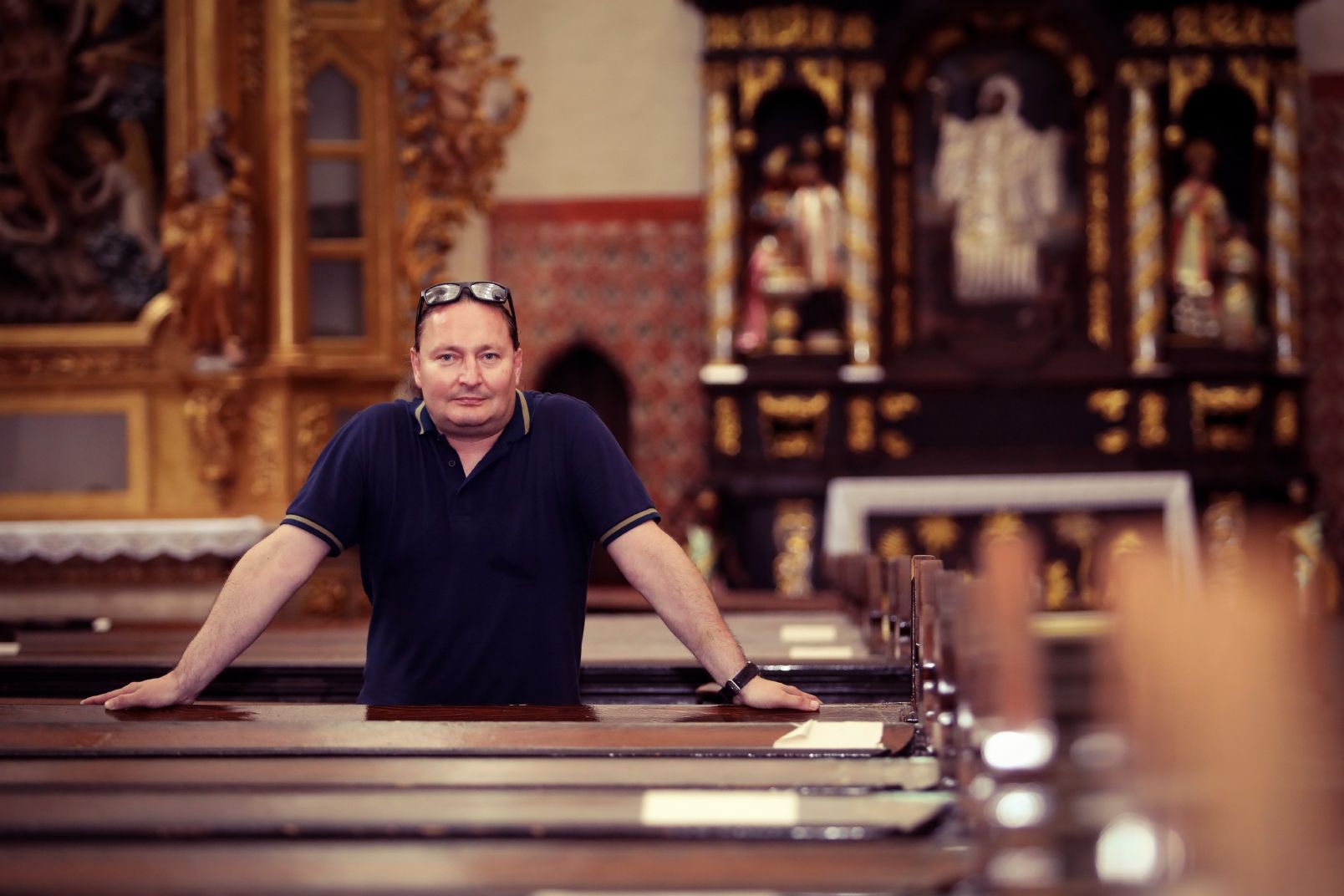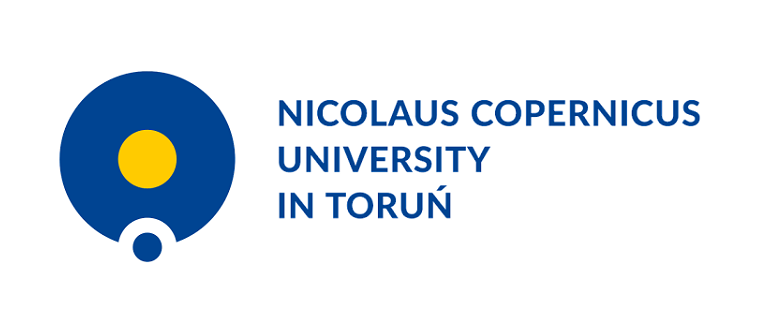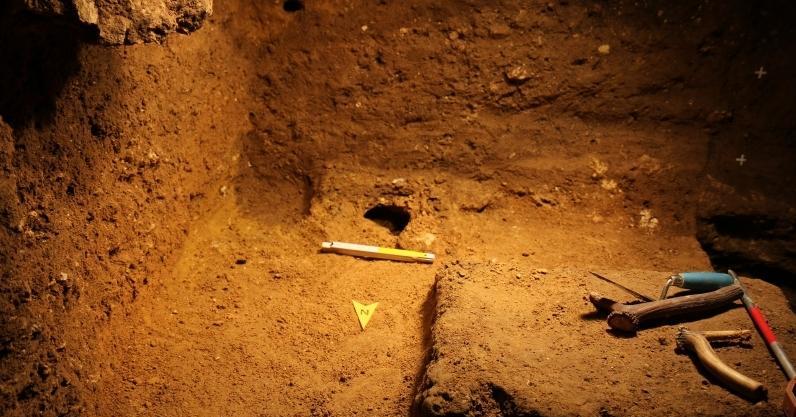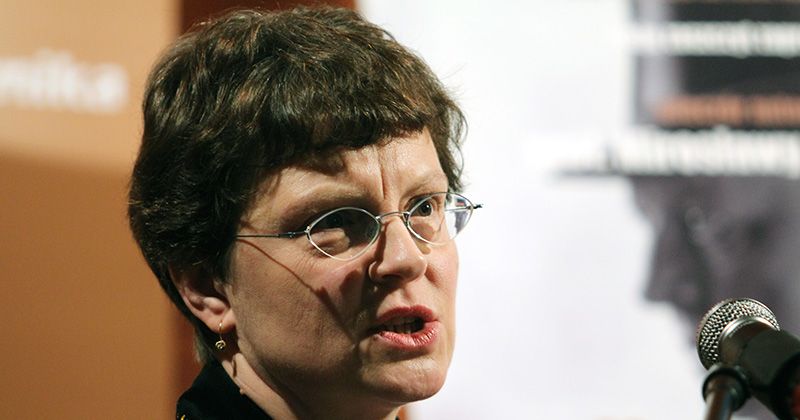Inventory of Art of Torun
To look at S.S. Johns Cathedral from the perspective of the crucifix or to see the interior of the temple under its ceiling – due to huge effort of scientist from the Faculty of Fine Arts two, old town churches in Toruń no longer bear secrets. A virtual tour is only a "supplement" of a multi task and interdisciplinary project under the supervision of professor Michał F. Woźniak, and coordination by professor Juliusz Raczkowski
In the former parish Church of St. John, the Baptist and St. John the Evangelist (the Cathedral today) and in the church and a part of the post Franciscan monastery of the Church of the Assumption of Mary, Juliusz Raczkowski, Dr. habil. and NCU professor, made almost 40 thousand photographs – both in visible light and in UV fluorescence, IR reflectography, and microphotographic technique. The other equipment used contained drones, ground radars, light scanners, portable XRF spectrometer, and scanning electronic microscope. Hundreds of measures and documentation drawings were made. A lot of specialists representing different areas of science were involved in the project; art historians, historians, dendrochronologists, petrographers, and art preservationists. This required huge effort, a lot of tools and methods. The effects are already visible although it is still the very beginning of this multitask and interdisciplinary project. The first phase, which comprises the two churches, will end in 2023, whereas the work on "Inventory of Art of Toruń" will last for over a decade.

Huge record of sacral monuments
"Inventory of Art of Toruń" is a scientific and research project, financed by the national Program of Development of Humanities (currently, its first part is being executed under the name: "Sacral Heritage, Old Town", 0122/NPRH6/H11/85/2018). The target is a complex and multilayered inventory of the churches of the Old Town in Toruń. For this reason, many interdisciplinary methods and tools are used. The project manager is Michał F. Woźniak, Dr. habil., NCU professor from the Chair of Monument and Museum Expertise, whereas the coordinator is Juliusz Raczkowski, Dr. habil, NCU professor from the Chair of Interior Architecture and Sculpture. Among the main project performers are: Monika Jakubek-Raczkowska, Dr. habil, NCU professor; Piotr Oliński, Dr. habil, NCU professor; Dr. Franciszek Skibiński; and Elzbieta Szmit-Naud, Dr. habil, NCU professor; Jacek Tylicki, Dr. habil, NCU professor. Among the research assistants, there are Dr. Weronika Kofel and Tomasz Kowalski, M.A. They are supported by volunteers – students of Heritage Protection and doctoral students from the Faculty of Fine arts. They also receive support from researchers of other scientific centers.
In the first place, the scientists dealt with the research of the parish church, currently Cathedral of St. John the Baptist and St. John the Evangelist, and the church and a part of the post Franciscan monastery of the Church of the Assumption of Mary.
Complete inventory comprises the architecture with the architectural design, which is the architectural details, polychrome, wall paintings, stained glass, floor tiles, and portable elements such as: paintings and woodcarvings, such as the stall, benches, confessionals, sculptures and artistic crafts including robes, utensils and liturgy equipment. Inventory will also be taken of other objects in situ and those found in stocks of Polish and foreign museums, e.g., in Toruń, Warsaw, Pelplin, which used to be an element of the whole interior design – says Juliusz Raczkowski, Dr.habil, NCU professor.
What effect do the scientists expect to obtain? They want to launch the first enlarged actual record, which means inventory of preserved monuments, most of which will gain a new, distinct scientific recognition.
The record will present structures, types, styles, functions, history and historical significance of the monuments researched – explains professor Raczkowski. The main aim of our project, however, is a detailed recognition of the sacral heritage of Toruń, which will integrate all the results we have achieved in the research, especially that Toruń does not have a catalogue of the monuments of art.

Therefore, and first of all, the result will be the publication of "Inventory of the Art of Toruń". Second of all, it will be a bilingual (Polish and English) digital platform presenting a complex structural and historical description of the objects, metrical data, iconography, complete photographic documentation, results of architectural and technological research, 3D models and reconstructions, etc. The launching of the platform has been already preceded with a regularly and systematically enriched website of the project.
Research on a large scale
The research on the inventory began in 2018. The first step was to carry out search and source queries related to, for instance, the functioning, transformations and iconography of the examined objects. The scientists were also looking for information in both national and foreign research centers, for example in Berlin or in Marburg.
The structural examination of the two churches was preceded with a complex measuring and drawing documentation and a set of architectural sketches with the application of, most of all, 3D laser scanning, visualization and 3D models as well as technological research and documentation of the design and furnishing.
In our research we apply non-destructive methods, for instance geo-radars. They allowed us to localize the sites of crypts, burial vaults, fragments of fundaments and the elements of former buildings and anomalies which are difficult to interpret unanimously on the basis of previous research. We also analyze the technical structure of the monuments, for instance in visible light and in UV and IR rays as well as we use portable XRF spectrometer – says professor Raczkowski. – The analysis and documentation of monumental objects with the application of such methods allows us to evaluate the degree of their preservation, authenticity, originality and integrity of the monuments, materials and techniques, repairs and former interference.
In some research, however, the scientists have to use invasive methods, for instance in dendrochronological analyses (where it is impossible to use macrophotography of annual build-up layers of wood). In case of some other objects, it was necessary to collect samples for material identification, for instance in the range of petrographic examination.
In order to make the inventory and documentation, we also use photographic drones.
Due to the application of this equipment, we may take pictures, including approximations, of objects with are hardly accessible, orthogonal documentation of floors, wall paintings, stained glass, as well as create panoramic views and presentations for so called photogrammetry – says professor Raczkowski. – Only due to the application of such sophisticated and various tools do we have a guarantee to make a complete record of available masterpieces.
Eye to eye with a historical monument
The online service of the project, a certain portal of knowledge about sacral art monuments of the two Medieval churches in Toruń is already available to those who are interested. It contains a still expanding gallery of high-definition pictures, so called the giga pixeled. Due to this, we are able to notice the details, which used to be unattainable to ordinary visitors. We can carefully see to the ceiling of the main nave in the Church of the Assumption of Mary Mother. The sculpture in the mausoleum of Anna Vasa Princess of Sweden, wall paintings which depict saint patrons in S.S. Johns Cathedral or the details on the tombstone of the married couple von Soest. We may also "enter" the vault of the Cathedral, which is unavailable to sightseers on a daily basis and which is extremely interesting as one of the largest known funeral vaults in the area of the southern coast of the Baltic Sea.
At the moment of discovery, there were about 300 graves here. All of them have been examined and transferred to the vault below the Chapel of St. Ignatius of Loyola. Among the buried there were both lay persons and clergy men. – explains professor Raczkowski.
The gallery, however, is not only confined to the presentation of sole pictures. Each photograph is equipped with an expanded scientific commentary, which allows us to learn not only what the picture depicts, but also what its origin is, who its author was and what techniques were applied.
Another curiosity are virtual tours which we may take through the two temples and see the enormous panorama of the presbytery of the Church of the Assumption of Mary Mother. Here, we will also come across the references to scientific descriptions of the objects that we see during the tour of sacral art monuments.
It has cost us a lot of hard work to create these tours. This has been completed by the of the scientific tasks of the project. The idea, however, seems to be very good as due to the tours one may look at the churches from a different perspective, and the descriptions provide quite a lot of information about the objects – says professor Raczkowski. – One of our aims is to spread the knowledge, to popularize research among the still growing audience. This, as I hope, is what the tours offer.
The project focused mainly on making the results of the research available. This is proved by the fact that the website of the project contains a lot of publications which have been made on the basis of the available material.
 NCU News
NCU News








 Humanities and arts
Humanities and arts
 Humanities and arts
Humanities and arts
 Humanities and arts
Humanities and arts